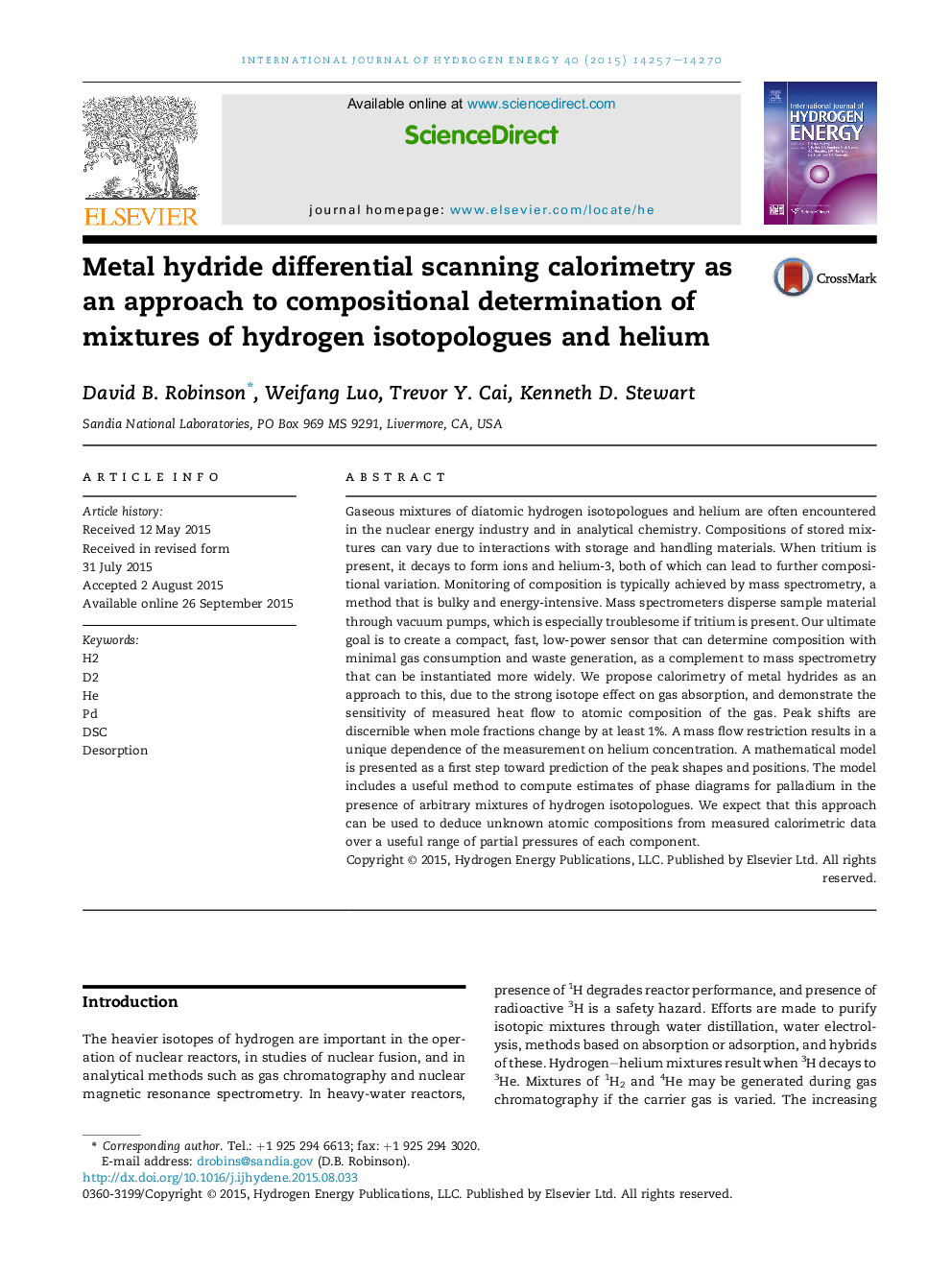| کد مقاله | کد نشریه | سال انتشار | مقاله انگلیسی | نسخه تمام متن |
|---|---|---|---|---|
| 1269153 | 1497432 | 2015 | 14 صفحه PDF | دانلود رایگان |
• Calorimetry of palladium can determine isotopic fractions in hydrogen gas mixtures.
• Palladium contacts the gas through a flow restriction.
• The flow restriction reveals partial pressure of inert components like helium.
• An independent measurement of total pressure is needed.
• The method is best suited to mixtures with similar quantities of two isotopes.
Gaseous mixtures of diatomic hydrogen isotopologues and helium are often encountered in the nuclear energy industry and in analytical chemistry. Compositions of stored mixtures can vary due to interactions with storage and handling materials. When tritium is present, it decays to form ions and helium-3, both of which can lead to further compositional variation. Monitoring of composition is typically achieved by mass spectrometry, a method that is bulky and energy-intensive. Mass spectrometers disperse sample material through vacuum pumps, which is especially troublesome if tritium is present. Our ultimate goal is to create a compact, fast, low-power sensor that can determine composition with minimal gas consumption and waste generation, as a complement to mass spectrometry that can be instantiated more widely. We propose calorimetry of metal hydrides as an approach to this, due to the strong isotope effect on gas absorption, and demonstrate the sensitivity of measured heat flow to atomic composition of the gas. Peak shifts are discernible when mole fractions change by at least 1%. A mass flow restriction results in a unique dependence of the measurement on helium concentration. A mathematical model is presented as a first step toward prediction of the peak shapes and positions. The model includes a useful method to compute estimates of phase diagrams for palladium in the presence of arbitrary mixtures of hydrogen isotopologues. We expect that this approach can be used to deduce unknown atomic compositions from measured calorimetric data over a useful range of partial pressures of each component.
Figure optionsDownload as PowerPoint slide
Journal: International Journal of Hydrogen Energy - Volume 40, Issue 41, 2 November 2015, Pages 14257–14270
